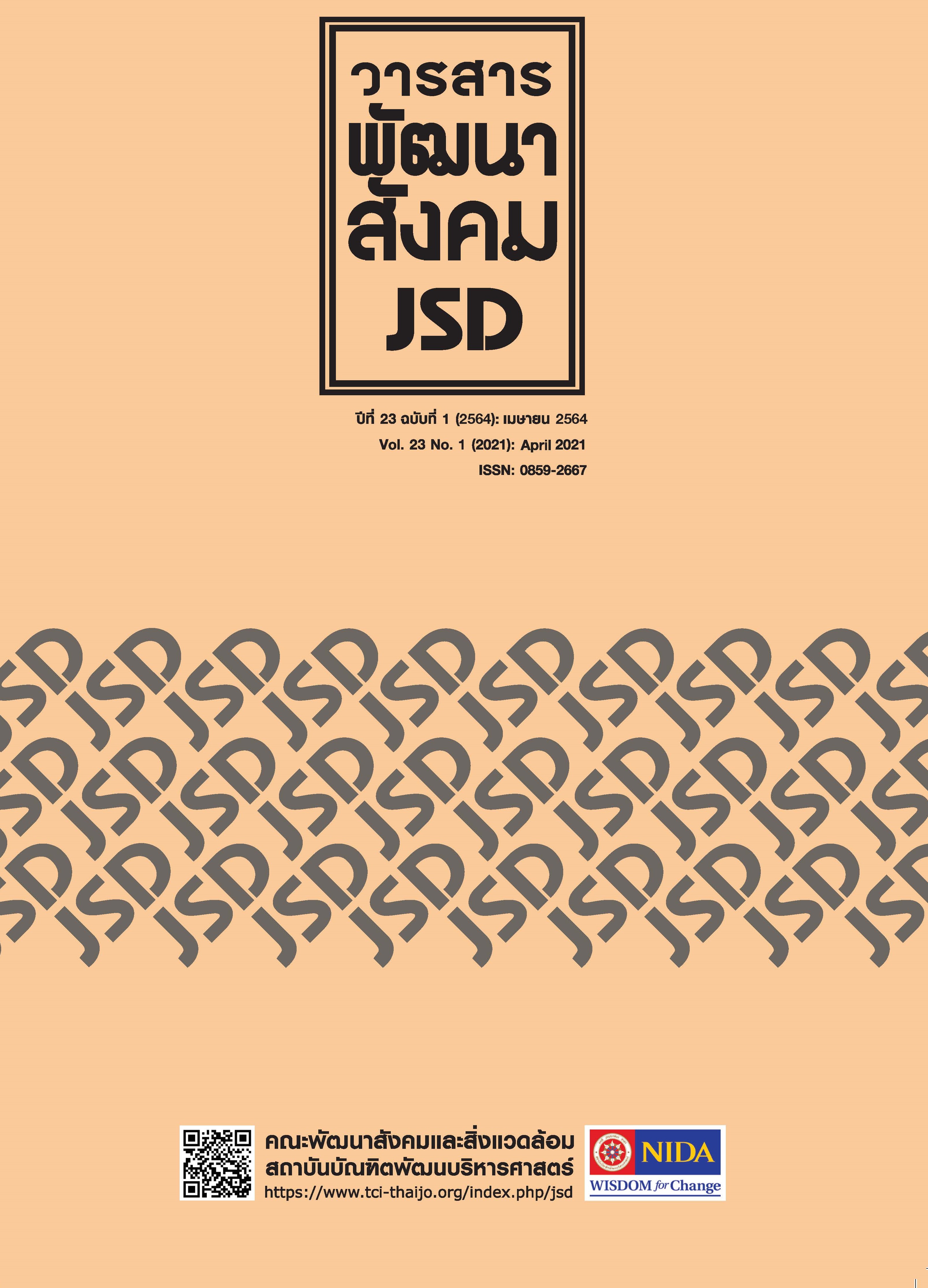The Development of A Sustainable Forest Management Model by Community Participation in National Park: A Case Study of Mae Yom National Park, Song District, Phrae Province
Main Article Content
Abstract
Article Details

This work is licensed under a Creative Commons Attribution-NonCommercial-NoDerivatives 4.0 International License.
References
Australian and New Zealand Environment and Conservation Council. (2000). Best Practice in Protected Area Management Planning. Tasmania: Parks and Wildlife Service.
Chulalongkorn University. (1998). Ecological Impact Assessment of Kaeng Sue Ten Dam Project [In Thai]. Bangkok: Office of Environmental Policy and Plan.
Cinner, J.E., Daw, T.M., McClanahn, T.R., Muthiga, N., Abunge, C., Hamed, S., Mwaka, B., Rabearisoa, A., Wamukota, A., Fisher, E. & Jidddawi, N. (2012). Transitions toward Co-Management: The Process of Marine Resource Management Devolution in Three East African Countries. Global Environmental Change, 22(3), 651-658.
Dowding, K. (1995). Model or Metaphor? A Critical Review of the policy Network Approach. Political Studied, 43(1), 136-158.
Dudley. (2008). Guidelines for Applying Protected Area Management Categories. Switzerland: International Union for Conservation of Nature.
Hoogstra-Klein, M.A., Permadi, D.B. & Yasmi, Y. (2012). The Value of Cultural Theory for Participatory Processes in Natural Resource Management. Forest Policy and Economics, 20(2012), 99-106.
Lane, M.B. (2003). Participation, Decentralization, and Civil Society: Indigenous Rights and Democracy in Environment Planning. Journal of Planning Education and Research, 22(4), 360-373.
Leverington, F., Costa.K.L., Courrau, J., Pavese, H., Nolte, C., Marr, M., Coad, L., Burgess, N., Bomhard, B. & Hockings, M. (2010). Management Effectiveness Evaluation in Protected Areas – a Global Study. Australia: The University of Queensland.
Liu, W.H., Wu, C.C., Jhan, H.T. & Ho, C.H. (2011). The Role of Local Government in Marine Spatial Planning and Management in Taiwan. Marine Policy, 35(2), 105-115.
Lockwood, M., Davidson, J., Curtis, A., Stratford, E. & Griffith, R. (2009). Multi-level Environmental Governance: Lessons from Australian Natural Resource Management. Australian Geographer, 40(2), 169-186.
Lostarnau, C., Oyarzun, J., Maturana, H., Soto, G., Senoret, M., Soto, M., Rotting, T., Amezaga, J.M. & Oyarzum, R. (2011). Stakeholder Participation within The Public Environmental System in Chile: Major Gaps between Theory and Practice. Journal of Environmental Management, 92(10), 2470-2478.
Luzi, S., Hamouda, M.A., Sigrist, F. & Tauchnitz, E. (2008). Water Policy Networks in Egypt and Ethiopia. The Journal of Environment Development, 17(3), 238-268.
McDermott, M.H. (2009). Locating Benefits: Decision-spaces, Resource Access and Equity in US Community-based Forestry. Geoforum, 40(2), 249-259.
Office of the National Economic and Social Development Council. (2011). Eleventh National Economic and Social Development Plan (2012-2016). Bangkok: Office of the Prime Minister.
Perkins, P.E. (2011). Public Participation in Watershed Management: International practices for Inclusiveness. Physics and Chemistry of the Earth, 36(5-6), 204-212.
Polapan, S. (2009). Impact of Forest Area Utilization by Local Communities to Habitat Utilization of Wildlife: A Case Study in Kaeng Krachan National Park [In Thai]. (M.Sc. Thesis). Bangkok: Kasetsart University.
Samanmitr K., Kam-yo T., Wannapong S., & Tiamtaisong W. (2012). Application of Geographic Information Systems for Teak (Tectona grandis L.f.) at Natural Potential Site, Mae Yom National Park [In Thai]. Chiang Mai: Maejo University.
Sayan Kham-neung (ed.). (2006). Yom River, Golden Teakwood Forest, Way of life of Sa-Iab People [In Thai]. Bangkok: Wanida Press.
Sueb Nakasathien Foundation. (2015). Thai Forestry Situations [In Thai]. Bangkok: Sueb Nakasathien Foundation.
Sung-kaew, B. (2013). The Developmental Dynamics of Decentralized Decision-making for Local Actors in The Define Large Scale Irrigation Dam Project: Case Study of Kaeng Sua Ten Dam Project, Thailand [1997-2013] [In Thai]. (Ph.D. Dissertation). Bangkok: Thammasat University.
United Nations. (1962). Decentralization for National and Local Development. New York: United Nations Technical Assistance Programme.


